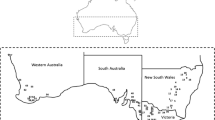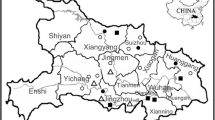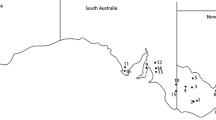Abstract
Blackleg disease caused by the pathogen Leptosphaeria maculans is the most devastating disease of canola (Brassica napus, oilseed rape). This disease occurs in all canola-growing regions of the world except China. It has been suggested that L. maculans contaminated seed and admixture (associated plant debris) could lead to a blackleg epidemic in China and as a consequence, restrictions on importations into China were placed on canola seed from Australia and Canada in 2009. We show that canola pods infected by L. maculans can lead to seed contamination, and resultant seedling infection, which then leads to cankering in adult plants. The fungus can sexually reproduce over summer on stubble derived from these plants. Airborne sexual spores are then released in the following year– thus completing the life cycle of the fungus from a contaminated seed and providing a potential source for an epidemic, particularly in countries such as China where canola cultivars do not have high levels of resistance to L. maculans. Furthermore, sexual fruiting bodies can also be produced on admixture. The presence of blackleg lesions on canola pods correlated with seed contamination by the blackleg fungus. Viability of L. maculans is reduced on contaminated seed over a twelve month period. Surveying blackleg disease in field trials in Australia showed that the presence and degree of stem cankers did not correlate with the level of pod infection. This suggests that pod lesions are likely to arise as a result of new infection events, rather than the pathogen moving from pre-existing infections (stem cankers) onto the pods. Furthermore, pod infections are likely to be a result of seasonal conditions rather than specific to regions where canola is cropped at a high intensity.




Similar content being viewed by others
References
Aubertot, J. N., West, J. S., Bousset-Vaslin, L., Salam, M. U., Barbetti, M. J., & Diggle, A. J. (2006). Improved resistance management for durable disease control: a case study of phoma stem canker of oilseed rape (Brassica napus). European Journal of Plant Pathology, 114, 91–106.
Balesdent, M. H., Barbetti, M. J., Li, H., Sivasithamparam, K., Gout, L., & Rouxel, T. (2005). Analysis of Leptosphaeria maculans race structure in a worldwide collection of isolates. Phytopathology, 95, 1061–1071.
Balesdent, M. H., Fudal, I., Ollivier, B., Bally, P., Grandaubert, J., Eber, F., et al. (2013). The dispensable chromosome of Leptosphaeria maculans shelters an effector gene conferring avirulence towards Brassica rapa. New Phytologist, 198, 887–898.
Chigogora, J. L., & Hall, R. (1995). Relationships among measures of blackleg in winter oilseed rape infection of harvested seed by Leptosphaeria maculans. Canadian Journal of Plant Pathology, 17, 25–30.
Delourme, R., Chevre, A. M., Brun, H., Rouxel, T., Balesdent, M. H., Dias, J. S., et al. (2006). Major gene and polygenic resistance to Leptosphaeria maculans in oilseed rape (Brassica napus). European Journal of Plant Pathology, 114, 41–52.
Elliott, V. L., Marcroft, S. J., Howlett, B. J., & Van de Wouw, A. P. (2015). Gene-for-gene resistance is expressed in cotyledons, leaves and pods in the Leptosphaeria maculans-Brassica napus pathosystem but not during stem colonisation. Plant Breeding, Manuscript accepted.
Fitt, B. D. L., Hu, B. C., Li, Z. Q., Liu, S. Y., Lange, R. M., Kharbanda, P. D., et al. (2008). Strategies to prevent spread of Leptosphaeria maculans (phoma stem canker) onto oilseed rape crops in China; costs and benefits. Plant Pathology, 57, 652–664.
Fudal, I., Ross, S., Gout, L., Blaise, F., Kuhn, M. L., Eckert, M. R., et al. (2007). Heterochromatin-like regions as ecological niches for avirulence genes in the Leptosphaeria maculans genome: map-based cloning of AvrLm6. Molecular Plant-Microbe Interactions, 20, 459–470.
Ghanbarnia, K., Fudal, I., Larkan, N. J., Links, M. G., Balesdent, M., Profotova, B., et al. (2015). Rapid identification of the Leptosphaeria maculans avirulence gene AvrLm2 using an intraspecific comparative genomics approach. Molecular Plant Pathology.
Ghanbarnia, K., Lydiate, D. J., Rimmer, S. R., Li, G., Kutcher, R., Larkan, N. J., et al. (2012). Genetic mapping of the Leptosphaeria maculans avirulence gene corresponding to the LepR1 resistance gene of Brassica napus. Theoretical and Applied Genetics, 124, 505–513.
Gout, L., Fudal, I., Kuhn, M. L., Blaise, F., Eckert, M., Cattolico, L., et al. (2006). Lost in the middle of nowhere: the AvrLm1 avirulence gene of the Dothideomycete Leptosphaeria maculans. Molecular Microbiology, 60, 67–80.
Larkan, N. J., Lydiate, D. J., Parkin, I. A., Nelson, M. N., Epp, D. J., Cowling, W. A., et al. (2013). The Brassica napus blackleg resistance gene LepR3 encodes a receptor-like protein triggered by the Leptosphaeria maculans effector AVRLM1. New Phytologist, 197, 595–605.
Larkan, N. J., Ma, L., & Borhan, H. (2015). The Brassica napus receptor-like protein RLM2 is encoded by a second allele of the LepR3/Rlm2 blackleg resistance locus. Plant Biotchnology Journal.
Li, C. X., Wratten, N., Salisbury, P., Burton, W., Potter, T. D., Walton, G., et al. (2008). Response of Brassica napus and B. juncea germplasm from Australia, China and India to Australian populations of Leptosphaeria maculans. Australasian Plant Pathology, 37, 162–170.
Liu, Z., Akinwunmi, O., Latunde-Dada, A. O., Hall, A. M., & Fitt, B. D. L. (2014). Phoma stem canker disease on oilseed rape (Brassica napus) in China is caused by Leptosphaeria biglobosa ‘brassicae’. European Journal of Plant Pathology, 140, 841–857.
Long, Y., Wang, Z., Sun, Z., Fernando, D. W. G., McVetty, P. B. E., & Li, G. (2011). Identification of two blackleg resistance genes and fine mapping of one of these two genes in a Brassica napus cultivar ‘Surpass400’. Theoretical and Applied Genetics, 122, 1223–1231.
Marcroft, S. J., Elliott, V. L., Cozijnsen, A. J., Salisbury, P. A., Howlett, B. J., & Van de Wouw, A. P. (2012a). Identifying resistance genes to Leptosphaeria maculans in Australian Brassica napus cultivars based on reactions to isolates with known avirulence genotypes. Crop and Pasture Science, 63, 338–350.
Marcroft, S. J., Sprague, S. J., Pymer, S. J., Salisbury, P. A., & Howlett, B. J. (2004). Crop isolation, not extended rotation length, reduces blackleg (Leptosphaeria maculans) severity of canola (Brassica napus) in south-eastern Australia. Australian Journal of Experimental Agriculture, 44, 601–606.
Marcroft, S. J., Van de Wouw, A. P., Salisbury, P. A., Potter, T. D., & Howlett, B. J. (2012b). Rotation of canola (Brassica napus) cultivars with different complements of blackleg resistance genes decreases disease severity. Plant Pathology, 61, 934–944.
Parlange, F., Daverdin, G., Fudal, I., Kuhn, M. L., Balesdent, M. H., Blaise, F., et al. (2009). Leptosphaeria maculans avirulence gene AvrLm4-7 confers a dual recognition specificity by the Rlm4 and Rlm7 resistance genes of oilseed rape, and circumvents Rlm4-mediated recognition through a single amino acid change. Molecular Microbiology, 71, 851–863.
Plissonneau, C., Daverdin, G., Ollivier, B., Blaise, F., Degrave, A., Fudal, I., Rouxel T., & Balesdent, B. H. (2015). A game of hide and seek between avirulence genes AvrLm4-7 and AvrLm3 in Leptosphaeria maculans. New Phytologist. doi:10.1111/nph.13736.
Stuthmann, D. D., Leonard, J. J., & Miller-Garvin, J. (2007). Breeding crops for durable resistance to disease. Advances in Agronomy, 95, 319–367.
Van de Wouw, A. P., Lowe, R. G. T., Elliott, C. E., Dubois, D. J., & Howlett, B. J. (2014). An avirulence gene, AvrLmJ1, from the blackleg fungus, Leptosphaeria maculans, confers avirulence to Brassica juncea cultivars. Molecular Plant Pathology, 15, 523–530.
Van de Wouw, A. P., Marcroft, S. J., Barbetti, M. J., Hua, L., Salisbury, P. A., Gout, L., et al. (2009). Dual control of avirulence in Leptosphaeria maculans towards a Brassica napus cultivar with ‘sylvestris-derived’ resistance suggests involvement of two resistance genes. Plant Pathology, 58, 305–313.
Van de Wouw, A. P., Marcroft, S. J., & Howlett, B. J. (2015). Blackleg disease of canola in Australia. Crop and Pasture Science, Manuscript accepted.
Van de Wouw, A. P., Thomas, V. L., A.J., C., Marcroft, S. J., Salisbury, P. A., & Howlett, B. J. (2008). Identification of Leptosphaeria biglobosa ‘canadensis’ on Brassica juncea stubble from northern New South Wales. Australasian Plant Disease Notes, 3, 124–128.
West, J. S., Evans, N., Liu, S., Hu, B. C., & Peng, L. (2000). Leptosphaeria maculans causing stem canker of oilseed rape in China. Plant Pathology, 49, 800.
Wood, P. M., & Barbetti, M. J. (1977). The role of seed infection in te spread of blackleg of rape in Western Australia. Australian Journal of Experimental Agriculture and Animal Husbandry, 17, 1040–1044.
Yu, F., Lydiate, D. J., & Rimmer, S. R. (2005). Identification of two novel genes for blackleg resistance in Brassica napus. Theoretical and Applied Genetics, 110, 969–979.
Yu, F., Lydiate, D. J., & Rimmer, S. R. (2008). Identification and mapping of a third blackleg resistance locus in Brassica napus derived from B. rapa subsp. sylvestris. Genome, 51, 64–72.
Zhang, X., White, R. P., Demir, E., Jedryczka, M., Lange, R. M., Islam, M., et al. (2014). Leptosphaeria spp., phoma stem canker and potential spread of L. maculans on oilseed rape crops in China. Plant Pathology, 63, 598–612.
Acknowledgments
We thank the Grains Research and Development Corporation for funding.
Author information
Authors and Affiliations
Corresponding author
Additional information
Angela P. Van de Wouw and Vicki L. Elliott contributed equally to this work.
Rights and permissions
About this article
Cite this article
Van de Wouw, A.P., Elliott, V.L., Ware, A. et al. Infection of canola pods by Leptosphaeria maculans and subsequent seed contamination. Eur J Plant Pathol 145, 687–695 (2016). https://doi.org/10.1007/s10658-015-0827-0
Accepted:
Published:
Issue Date:
DOI: https://doi.org/10.1007/s10658-015-0827-0




